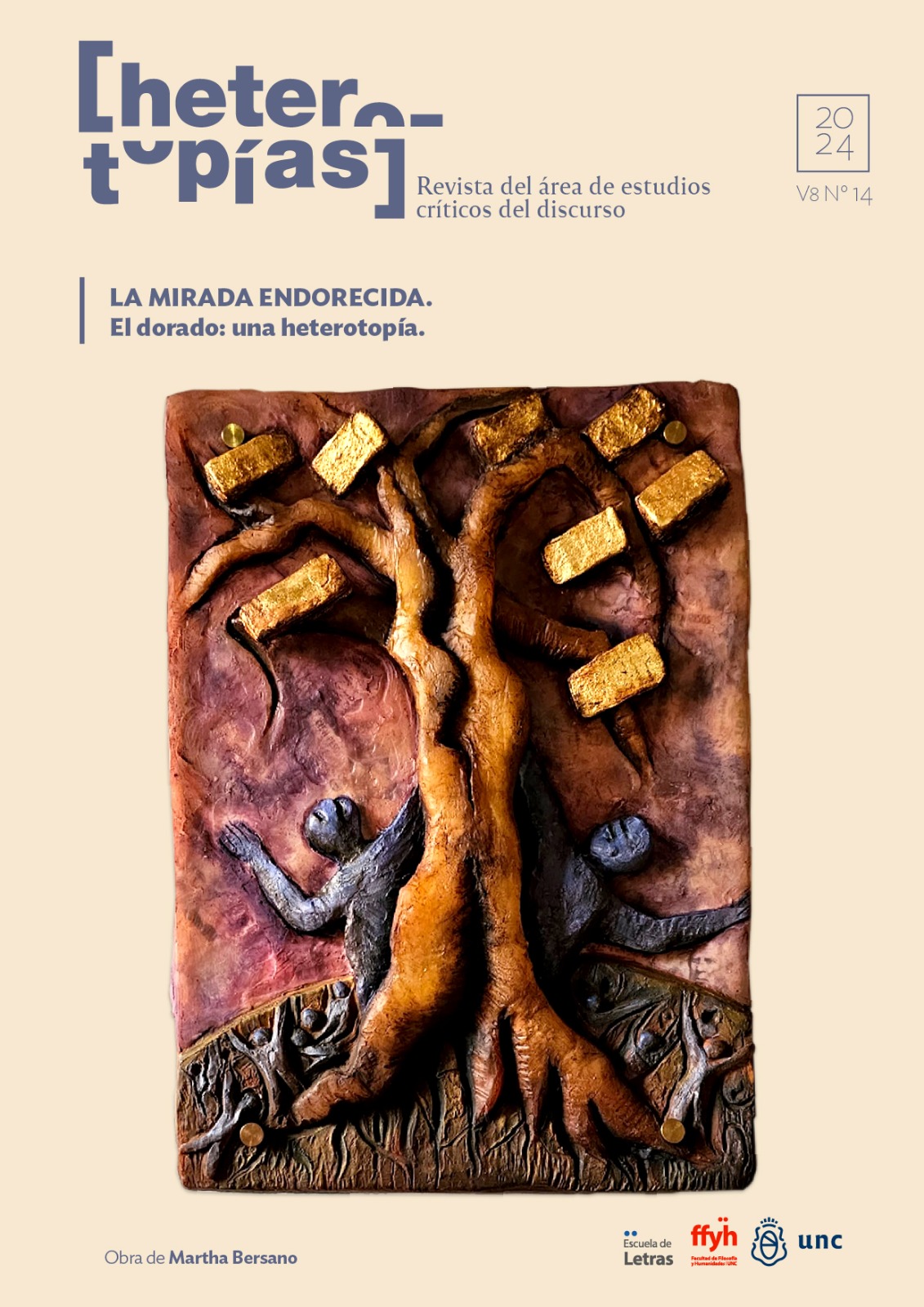
Heterotopías ha sido pensada, desde el Área de Estudios Críticos del Discurso de la Escuela de Letras de nuestra Facultad, como una revista semestral de investigación y divulgación que procura constituir un lugar de reunión y difusión de los trabajos teóricos y de las experiencias en terreno, de las personas interesadas en el análisis crítico y la comprensión de la dimensión discursiva de los fenómenos sociales y culturales inscriptos, en palabras de Foucault, “en el horizonte de la heterogeneidad espacial de relaciones que delinean lugares irreductibles unos a otros y absolutamente imposibles de superponer”. Desde las fronteras disciplinares, Heterotopías pretende conjuntar producciones críticas para la impugnación discursiva del espacio en que vivimos.
Su principal objetivo es construir y sostener un espacio de producciones textuales de carácter investigativo, que exprese y a la vez acompañe los trabajos que se están realizando en el área, prestando particular atención a la diversidad de abordajes y a la necesaria integración de diferentes tradiciones disciplinares.
La preparación de cada dossier será encomendada a dos editores, que estarán a cargo de la selección de los trabajos a publicar. La convocatoria para la presentación de trabajos será abierta a los interesados en el campo de estudios, propiciando la participación, en especial, de los claustros docente, de graduados y estudiantil de la Escuela, como así también de investigadores de otras instituciones académicas, según las características de cada dossier.
En cuanto a su estructura, la revista está organizada en torno a un dossier temático, definido para cada edición, acompañado de un conjunto de secciones destinadas a brindar información de interés académico, como reseñas bibliográficas o novedades de congresos y eventos científicos.
ISSN: 2618-2726
Vol. 7 Núm. 14 (2024): La mirada endorecida: El dorado, una heterotopía.

En esta nueva entrega de la revista Heterotopías (número 14), además de sus secciones habituales, se presenta el dossier “La mirada endorecida: El dorado, una heterotopía”, coordinado por Marcela Cecilia Marín (editora de nuestra revista) y Pablo Julián Méndez (artista y curador). El dorado permea las fronteras entre ficción, mito, imaginación e historia y abarca modos de existencia múltiples que tornan doradas las miradas. Encandiladas por el goce de los reflejos, proyectan (y retornan) formas de valor y de codicia que alimentan la ciega creencia en la acumulación y el extractivismo infinitos, sin considerar las formas de vida ni la posibilidad de contar de habitantes que conforman cada heterotopía dorada y sienten afectada su existencia. Marín y Méndez invitan a pensar ¿qué es El dorado? ¿cuántos El dorado existen y existieron en coordenadas geográficas distintas, pero con formas de vida similares? Sabemos que El dorado funciona como operatoria colonial, pero ¿cuántas veces nos detuvimos a pensar en la materialidad y los agentes implicados en esta historia y en su percepción? ¿qué hace el deseo en las potencialidades actuantes de El dorado, qué hace el oro, su brillo, lo dorado, los reflejos, el sol, qué hace el valor, qué hacen los muertos (ecocidios, terricidios, epistemicidios, genocidios)? ¿Cómo actúan la sangre en la Tierra, las herencias que se interrumpen, las ofrendas minerales a los dioses? ¿Qué hace la lengua, que hace la malinche, cómo participan estos agentes (entre muchos otros) en la continuidad territorial de El dorado? Estas problemáticas, entre otras, acompañan los distintos artículos que componen dossier.
La imagen de portada de este número, El árbol financiero, es obra de la artista Martha Berzano y forma parte de la serie “Árboles de la Vida Argentina”. Agradecemos el generoso aporte de Martha Berzano.
Publicado:
2024-12-13
Ver todos los números
Heterotopías es una revista que surgió en el marco de encuentros y debates del Área de Estudios Críticos del Discurso de la Escuela de Letras. Su meta es construir y sostener un espacio de producciones textuales de carácter investigativo, que exprese y a la vez acompañe los trabajos que se están realizando en el área, prestando particular atención a la diversidad de abordajes y a la necesaria integración de diferentes tradiciones disciplinares.
La misma promueve el trabajo en equipo, la producción académica, la puesta en común y la evaluación de investigaciones en el área sociodiscursiva y crítica, generando espacios de reflexión teórica, metodológica y práctica con aportes significativos que contribuyen a debates académicos, disciplinares y sociales.
Esta actividad nos permite pensar la propiedad intelectual como libertad de expresión y derecho al acceso a la cultura compartido a partir de la comunicación de contenidos en red. Posibilita que nos sumemos a los avances y desafíos en el movimiento de acceso abierto al conocimiento científico, en especial de América Latina y el Caribe.

